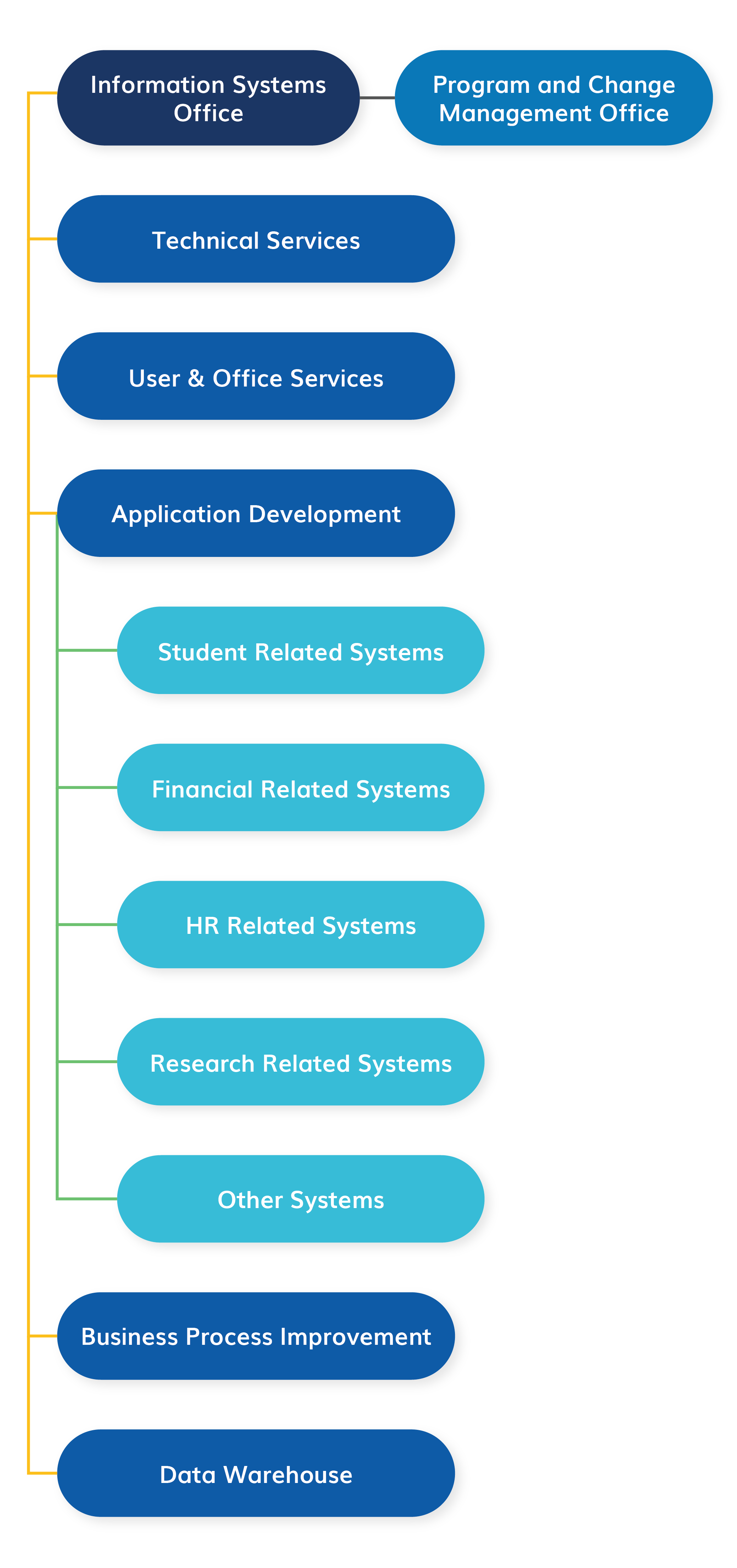Organization
Activities within the ISO could generally be grouped under two major categories:
- Day to day operational support activities (including system maintenance)
- System projects of larger magnitudes and durations
Activities under the first category, collectively, will demand a wide spectrum of technical, application, and business knowledge. At the same time, such activities are typically ad hoc and unpredictable, and could demand very rapid response in some urgent situations. It will therefore be very difficult for a small number of people (e.g. one or two persons) to be able to knowledgeably address issues which may arise from this full spectrum of functions. The relatively small number of staff in ISO has also made it impractical to have a dedicated group of "maintenance and support". Activities under the second category are more predictable and could be of sizable magnitude. There are, however, definite phases of events, requiring relatively few staff during initial project/prototyping stages and possibly large number of staff during development stages.
Given the nature of our activities, it is necessary that ISO organizes itself dynamically so that both situations are adequately supported. In this regard, ISO has adopted an organization structure which is highly matrix-oriented (as opposed to being hierarchically-oriented). Owing to the wide spectrum of support areas and services and a relatively small staff team, a virtual team approach is taken, characterized by:
- internally, some resources are pooled rather than rigidly divided among functional areas;
- externally, users are given clear contact points (eg. via designated system leaders) to whom they can refer matters related to their respective functional area/system;
- pooled resources are centrally coordinated and mobilized to support the system leaders and projects
The result is that, while membership (in terms of number and actual personnel) may vary, users could also identify with a "team", and each functional "team" will have a pool of resources available. Contract consultants/services are also used where appropriate to alleviate the gaps between resource availability and service demands.
Organization Chart

